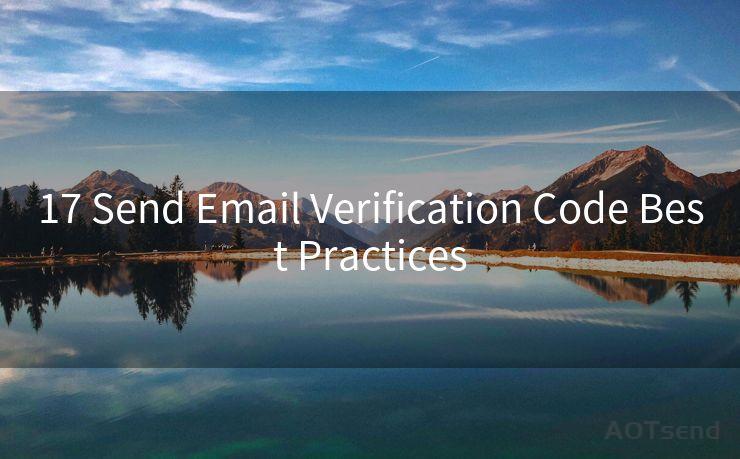17 Send Email Verification Code Best Practices




When it comes to user authentication and security, email verification codes play a crucial role. They provide an additional layer of security, ensuring that only the rightful owner of an email address can access certain services or make changes to their account. Here are 17 best practices to follow when sending email verification codes to enhance security and user experience.
1. Use a Secure Email Service
Start by using a secure email service provider that offers encryption and other security features. This ensures that your emails, including verification codes, are transmitted securely and can't be intercepted by unauthorized third parties.
2. Send Codes Immediately
As soon as a user requests a verification code, send it immediately. Any delay can frustrate users and may lead them to abandon the process.
3. Keep Codes Unique and Random
Generate unique and random verification codes for each request. This reduces the chances of codes being guessed or reused.
4. Set an Expiration Time
Verification codes should have a short expiration time, typically a few minutes, to minimize the risk of them being misused if intercepted.
5. Limit the Number of Attempts
Set a limit on the number of verification code requests a user can make within a certain time frame. This helps prevent brute-force attacks.
6. Clear and Concise Messaging
Ensure that the email containing the verification code has clear and concise instructions. Users should understand what the code is for and how to use it.
7. Use a Recognizable Sender Name
Use a recognizable sender name and email address to increase trust and reduce the chances of the email being marked as spam.
8. Avoid Using URLs in Verification Emails
To prevent phishing attacks, avoid including clickable URLs in verification emails. Instead, direct users to manually enter the verification code on your website or app.
🔔🔔🔔
【AOTsend Email API】:AOTsend is a Managed Email Service for sending transactional emails. Support Email Types: reminders, authentication, confirmations, notifications, verification codes, invoices, password resets, account activations, billing statements, two-factor authentication (2FA), and one-time passwords (OTP) emails, etc. $0.28 per 1000 Emails. 99% Delivery, 98% Inbox Rate.
You might be interested in:
Why did we start the AOTsend project, Brand Story?
What is a Managed Email API, How it Works?
Best 25+ Email Marketing Platforms (Authority,Keywords&Traffic Comparison)
Best 24+ Email Marketing Service (Price, Pros&Cons Comparison)
Email APIs vs SMTP: How they Works, Any Difference?
9. Optimize for Mobile Devices
Since many users access their emails on mobile devices, ensure that your verification emails are mobile-friendly and easy to read on smaller screens.
10. Test Across Multiple Email Clients
Test your verification emails across multiple email clients to ensure compatibility and readability.
11. Monitor and Respond to Bounces
Monitor email bounces and take appropriate action, such as Resending the verification code or providing alternative verification methods.
12. Provide Customer Support
Offer customer support for users who encounter issues with receiving or using verification codes.

13. Implement Rate Limiting
Implement rate limiting to prevent automated attacks that attempt to flood your system with verification code requests.
14. Educate Users on Security
Include educational material in your emails to help users understand the importance of keeping their verification codes secure.
15. Consider Alternative Verification Methods
While email verification is common, consider offering alternative verification methods like SMS or phone calls for added convenience and security.
16. Keep Audit Logs
Maintain audit logs of all verification code requests and usages for security and compliance purposes.
17. Regularly Review and Update Processes
Regularly review your email verification processes and update them as needed to address any emerging security threats or user experience issues.
By following these best practices, you can ensure that your email verification system is secure, user-friendly, and effective at protecting your users' accounts.




Scan the QR code to access on your mobile device.
Copyright notice: This article is published by AotSend. Reproduction requires attribution.
Article Link:https://www.mailwot.com/p2044.html



